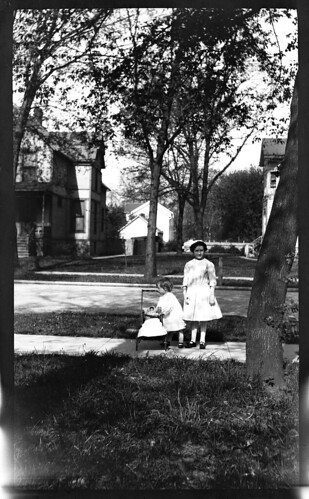A few months ago, I came across a collection of around 500 Kodachrome (and a few Anscochrome) slides taken between the years 1949 and 1961. After I bought the enormous box from the flea-market electronics shop where I found it, I took them home and loaded them into my projector. The first few hundred were incredibly beautiful photos from Mexico in the late 1950's (examples from that set will be posted soon), but what really caught my eye were the 30 or 40 slides of one of the largest natural disasters ever to his the midwest. In 1951, due to massive amounts of rainfall, the Kansas River (among other area rivers) flooded. The net damage in 2007 dollars was close to $7 billion. Here is one photo from the set of slides:

This was taken on Kodachrome film, which at the time, was rated at ASA 10. That means that, in order to take a steady photo without a tripod with a normal lens in this light, the exposure was likely around 1/60-1/125 at f/5.6. The interesting thing about Kodachrome is that, despite spending over 50 years in what might not have been the best conditions, it will likely still look like new. This slide (and most of the rest of the ones from this set) have especially held up well.



